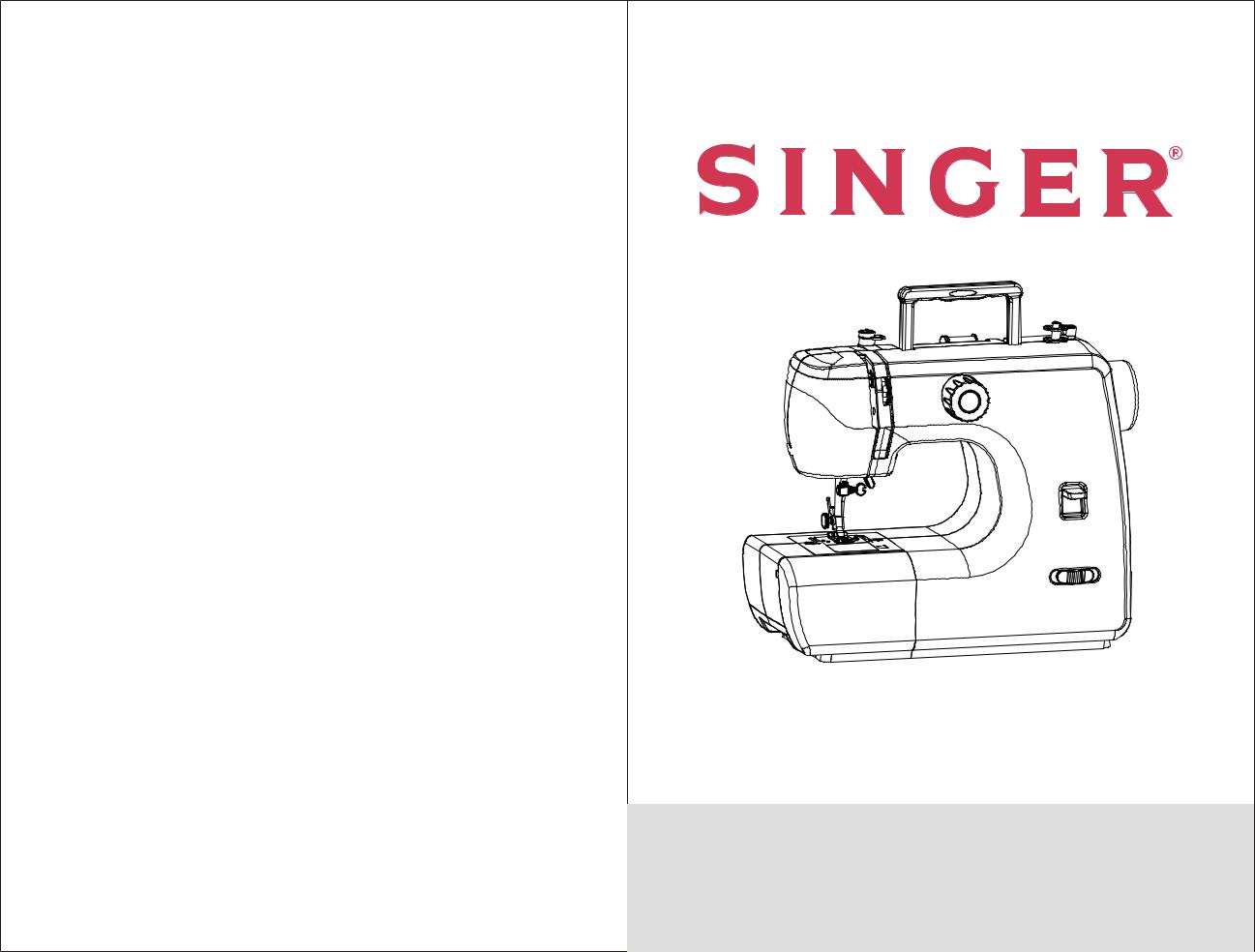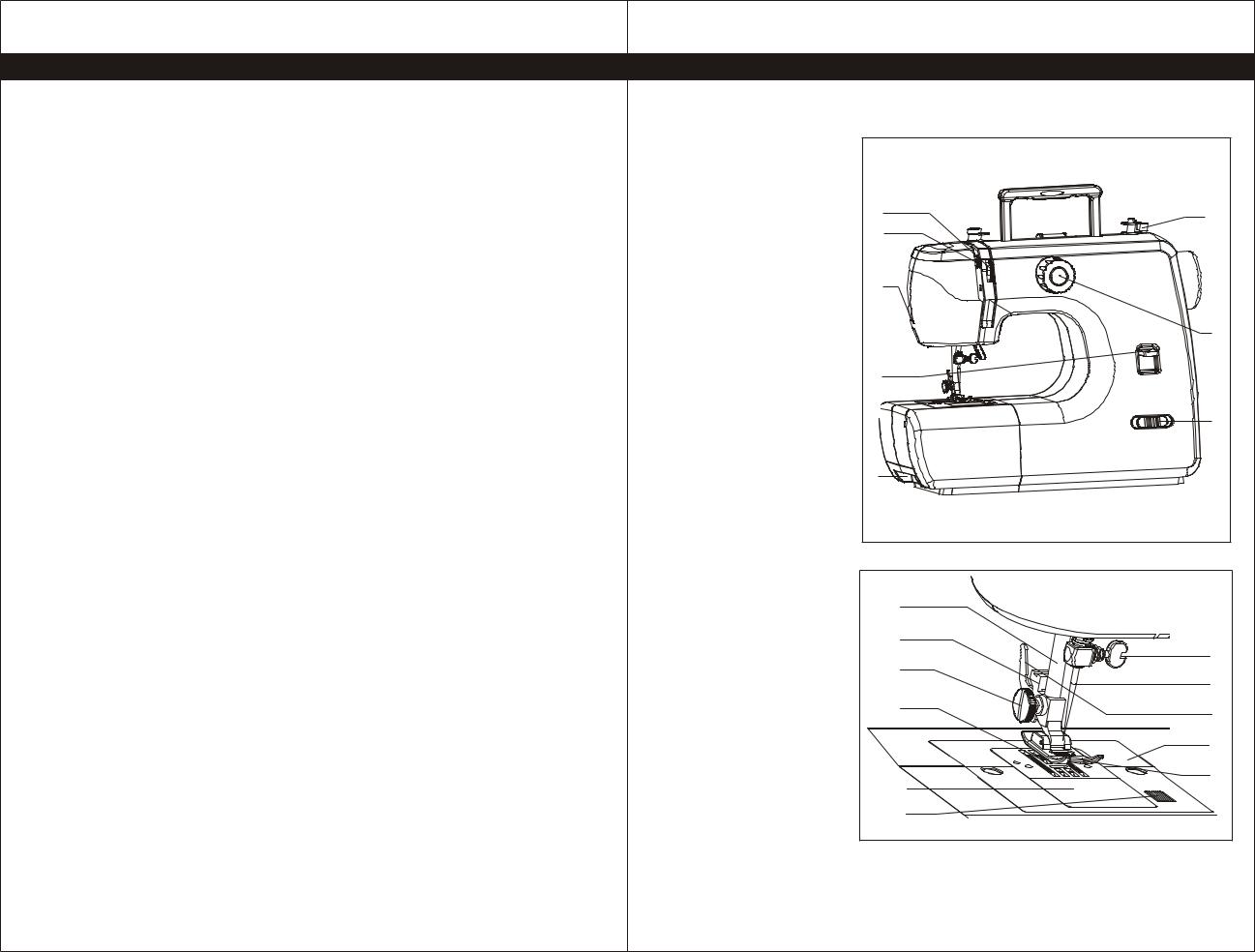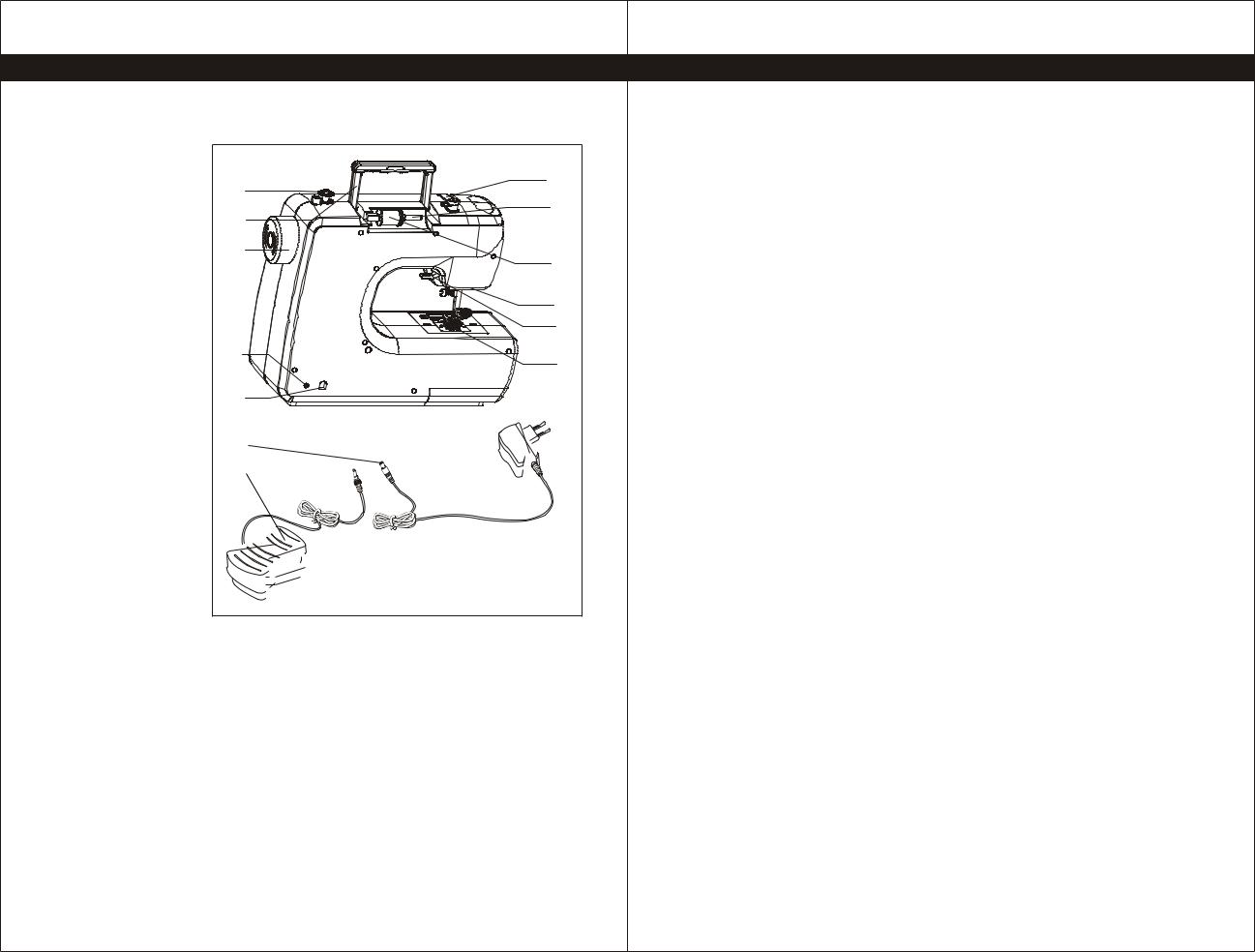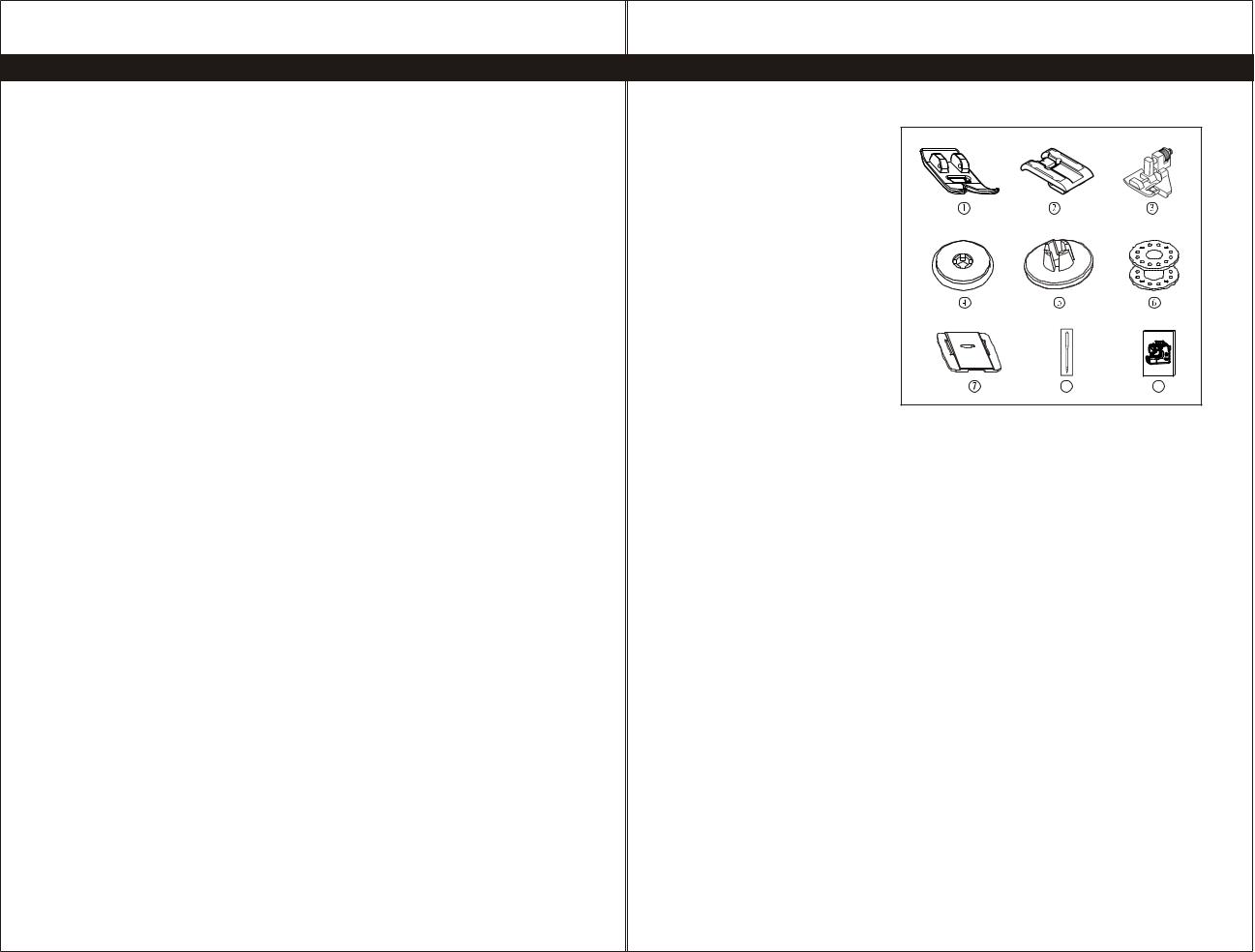SINGER 1004 VIVO User Manual

Why is the thread looping/bunching under my fabric?
Thread looping under your fabric is usually caused by not threading the upper tension correctly. With the presser foot lever in the UP position and tension set at 4, follow the threading guides/graphics on the top of the machine.
1.Place the thread spool on the spool pin and secure with a thread spool cap.
2.While holding the thread with your right hand, use your left hand to take the thread and take the thread and follow the thread path by bringing the thread down into the tension channel around the bottom and up the other side.Continue to thread the machine, but do not thread the needle.
Before threading the needle, perform this easy test to make sure the upper thread is threaded correctly. Making sure the presser foot is raised, pull the thread. It should pull easily. Now lower the presser foot, the thread should now resist when you pull it. There should be a significant increase in the tension of the thread. If there is no increased tension, the machine is not threaded correctly.
Why is my machine skipping stitches?
Skipped stitches can occur if needles are damaged or dull, or if they are incorrectly inserted into the machine.
First, your needle may be dull or damaged and need to be replaced. You should also check that you are using the correct needle for the type of fabric you are sewing. Refer to the Needle/Fabric/Thread/Guide on page 11 of this manual.
Next, check that the needle is installed correctly. The needle needs to be pushed as far up the needle shaft as possible. (It's easy to insert the needle halfway, clamp it down and think it is installed correctly.) Also, the flat part of the needle should be positioned towards the back. If the needle is not installed correctly, it will not be able to pull up the bobbin thread and will cause skipped stitches.
VivoTM -1004
INSTRUCTION MANUAL

Model 1004 VIVO INSTRUCTION MANUAL
INTRODUCTION
We recommend that before you start to use your create & repair machine, you take time to review this instruction book, seated at the machine. You will discover that this machine is not only easy to use, but it offers many features designed to make your sewing experience enjoyable.
IMPORTANT SAFETY INSTRUCTIONS
This machine is intended for household use only. Read all instructions before using this create & repair machine.
When using an electrical appliance, basic safety should always be followed in order to reduce the risk of burns, fire, electric shock or injury to persons, including the following:
1.The machine should never be left unattended when plugged in.
2.Always unplug the machine from the electrical outlet immediately after using and before cleaning.
3.Always unplug before re-lamping. Replace bulb with the same type rated 
4.Do not allow to be used as a toy. Close supervision is necessary when the machine is used by or near children.
5.Use this machine only for its intended use, as described in this manual. Use only attachments recommended by the manufacturer as contained in this manual.
6.Never operate this machine if it has a damaged cord or plug, if it is not working properly, if it has been dropped or damaged, or dropped into water. Return the machine to the nearest authorized retailer or service center for examination, repair, or electrical or mechanical adjustment.
7.Never operate the machine with any air openings blocked. Keep ventilation openings of the sewing machine and foot controller free from accumulation of lint, dust and loose fabrics.
8.Keep fingers away from all moving parts. Special care is required around the sewing machine needle.
9.Always use the proper needle plate. The wrong plate can cause the needle to break.
10.Do not use bent needles.
11. Do not pull or push the fabric while stitching, as this may deflect the needle, causing it to break.
12.Switch the sewing machine off when making any adjustments in the needle area, such as threading the needle, changing the needle, threading the bobbin, changing the presser foot, etc.
13.Always unplug the sewing machine from the electrical outlet when removing covers, lubrication, or when making any other user servicing adjustments mentioned in the instruction manual.
14.Never drop or insert any object into any opening.
15.Do not use outdoors.
16.Do not operate where aerosol spray products are being used or where oxygen is being administered.
17.To disconnect, turn all controls to the off position, then remove the plug from the electrical outlet.
18.Do not unplug by pulling on the cord. To unplug, grasp the plug, not the cord.
19.The sound pressure level under normal operation conditions is  72db .
72db .
20.Turn off or unplug the machine when it is not operating properly.
21.Never place anything on the foot controller.
22.If the power supply cord is damaged, it must be replaced by the manufacturer or its service agent or similarly qualified person in order to avoid a hazard.
1
23. This machine is not intended for use by persons (including children) with reduced physical, sensory or mental capabilities or lack of experience and knowledge, unless they have been given supervision or instruction concerning the use of the appliance by a person responsible for their safety. Children should be supervised to ensure that they do not play with the appliance.
SINGER and VIVO are exclusive trademarks of The Singer Company Limited S.à.r.l. or its Affiliates.
©2013 The Singer Company Limited S.à.r.l. or its Affiliates. All rights reserved.
2

TABLE OF CONTENTS
Principal Parts of the Machine........................................................................................ 4 Principal Parts and What They Do…………………………………........................................ 6 Accessories……………………………………………………………....................................... 8 Removing / Installing Extension Bed………………………………........................................ 9 Connecting Machine to Power Source……………………………......................................... 10 Needle / Fabric / Thread Guide………………………………………...................................... 11 Inserting / Changing Needles………………………………………........................................ 12 Presser Foot Lifter……………………………………………………........................................ 12 Removing / Attaching the Presser Foot.........…………………………................................ 13 Winding the Bobbin……………………………………………………....................................... 14 Inserting the Bobbin…………………………………………………......................................... 15 Threading the Upper Thread…………………………………………....................................... 15 Raising the Bobbin Thread……………………………………………...................................... 17 Choosing a Stitch Pattern…………………………………………………................................. 18 Straight Stitching….…..……………………………………………………................................ 18 Thread Tension.…...…………………………………………………………............................... 19 Reverse Sewing/Cutting the Thread………………………………………............................... 20 Zig-Zag Stitching….………………………………………………………................................... 21 Blind Hem Stitching….………………………………………………………............................... 22 Multi Zig-Zag Stitching……….……………………………………………….............................. 23 Darning Plate………….……………………………………………………….............................. 24 Changing the Bulb…….……………………………………………………….............................. 25 Maintenance…………………………………………………………………................................ 25 Troubleshooting…………………………………………………………….................................. 26
3
NAME OF PARTS
PRINCIPAL PARTS OF THE MACHINE (Machine Front View)
1.Thread tension dial
2.Thread take-up lever
3.Thread cutter
4.Reverse lever
5.Presser foot
6.Needle plate
7.Removable extension bed
8.Bobbin winding stopper
9.Power on/off & speed control switch
10.Pattern selector dial
11.Presser foot release lever
12.Needle
13.Needle clamp & screw
14.Presser bar
1 |
8 |
|
|
2 |
|
3 |
|
|
10 |
4 |
|
|
9 |
7 |
|
15.Presser foot holder
16.Presser foot screw
17.Feed dogs
18.Bobbin cover plate
19.Bobbin cover release button
14 |
|
15 |
|
|
13 |
16 |
|
|
12 |
17 |
11 |
|
|
|
6 |
18 |
5 |
|
|
19 |
|
4

NAME OF PARTS
PRINCIPAL PARTS OF THE MACHINE (Machine Back View)
20.Spool pin
21.Bobbin winder
22.Carry handle
23.Hand wheel
24.Foot controller input
25.Power cord socket
26.Power cord
27.Foot controller
28.Presser foot lifter
29.Light switch & built-in sewing light
30.Faceplate
31.Thread spool
32.Bobbin
30 |
21 |
20 |
22 |
23 |
31 |
29 |
28 |
24 |
32 |
25 |
26 |
27 |
5
PRINCIPAL PARTS AND WHAT THEY DO
1.Thread Tension Dial lets you select just the right tension for your stitch, thread and fabric. Tension discs, inside the machine, regulate the amount of tension on the needle thread. The thread tension dial is numbered from 1 through 9. The lower the number, the looser the tension is on the needle thread. The higher the number, the tighter the tension is on the needle thread. The settings of 3, 4 and 5 are marked with a box around the number, indicating the settings at the range at which most of your sewing will be done.
2.Thread Take-Up Lever controls the flow of the needle thread. The self threading eyelet simplifies the threading of the take up lever.
3.Thread Cutter is built-in at the side of the machine for convenience. Use this to trim thread tails quickly and easily when completing a seam.
4.Reverse Lever instantly reverses the stitching direction. Simply press the lever all the way down and hold in place. Release it to resume sewing forward.
5.Presser Foot holds the fabric against the feed dogs. Use the presser foot lifter to lower the presser foot to sew or to raise the presser foot to remove fabric.
6.Needle Plate is located under the presser foot area, around the feed dogs. It provides a flat surface for the fabric while sewing.
7.Removable Extension Bed provides a larger surface around the arm of the machine to support fabric while sewing. It can be removed to access the free arm, making it possible to sew smaller, more hard-to-reach areas such as pant or sleeve hems. It has a storage compartment for the machine's accessories, keeping them at your fingertips.
8.Bobbin Winding Stopper is used in the process of winding the bobbin.
9.Power On/Off & Speed Control Switch is used to turn the machine on and off. There is an “L” setting for lower speed, and an “H” setting for higher speed.
10.Pattern Selector Dial is used to set the machine for the stitch you want to sew. It is numbered from 1 through 12, and the numbers correspond to the display near the top of the machine. Just turn the dial to the stitch you want and sew.
11.Presser Foot Release Lever is located at the back of the presser foot holder. Use this lever to remove the presser foot from the presser foot holder.
12.Needle is placed into the needle bar, and is required in order for the machine to sew. Use only SINGER brand needles for best stitch results.
13.Needle Clamp & Screw work together to hold the needle in place for sewing.
14.Presser Bar holds the presser foot and presser foot holder. It is raised and lowered using the presser foot lifter.
15.Presser Foot Holder is attached to the presser bar. It holds the presser foot in place for sewing.
16.Presser Foot Screw is located to the left of the presser foot holder. The screw is used to secure the presser foot holder in position on the presser bar.
6

PRINCIPAL PARTS AND WHAT THEY DO
17.Feed Dogs move the fabric under the presser foot.
18.Bobbin Cover Plate sits over the bobbin and bobbin case. It is transparent, making it easier to monitor the thread supply.
19.Bobbin Cover Release Button is located to the right of the bobbin cover plate. Press it to the right to release the cover when replacing the bobbin.
20.Spool Pin holds the thread spool. The spool pin holder fits onto the spool pin to allow thread to unwind without tug or drag. The spool pin can be used in either of two ways (horizontally or vertically), depending on the size of the thread spool being used.
21.Bobbin Winder is used for smoothly and evenly winding thread onto the bobbin.
22.Carry Handle is built-in, making it easy and convenient for transporting the machine.
23.Hand Wheel controls the movement of the take-up lever and the needle. Always turn the hand wheel toward you.
24.Foot Controller Input is located at the back of the machine. The foot controller cord must be plugged into this input before starting to sew.
25.Foot Controller is used to start the machine sewing. Step on the controller to begin sewing and remove your foot from the controller to stop sewing.
26.Power Cord Socket at the back of the machine is where the power cord is inserted in order to provide power to the machine.
27.Power Cord has one end that connects into the power cord socket and another end that is connected to a main power supply.
28.Presser Foot Lifter is located inside the “C” area of the machine. Use the lever to raise and lower the presser foot. The foot is raised before threading the machine and to remove work from the machine. Lower the presser foot lifter before beginning to sew.
29.Light Switch & Built-in Sewing Light are used to illuminate the sewing area.
30.Faceplate houses the take-up lever, sewing light, tension mechanism and more.
31.Thread spool is used to hold and direct the thread into the tension disks.
There is a diagram at the top of the machine indicating where the thread slips into the guide.
32.Bobbin case holds the bobbin thread securely, providing adequate tension on the thread while sewing.
7
ACCESSORIES
Standard Accessories
1.All Purpose Foot
2.Satin Stitch Foot
3.Blind Hem Foot
4.Spool Base
5.Spool Cap
6.Metal Bobbins (2 + 1 in machine)*
7.Darning Plate |
|
|
8.Package of Needles |
|
|
(Style 2020/Size 14/90) |
|
|
9.Instruction Book |
8 |
9 |
|
|
*IMPORTANT!
Use only SINGER® brand metal Class 15 bobbins in this sewing machine. The tension on the bobbin thread is operated magnetically. Therefore, the metal bobbin is required. Using transparent or plastic bobbins, though they may seem to fit in the machine, will not allow the machine to function properly, and the stitch result will be unsatisfactory.
Using metal bobbins will provide correct stitch results.
8
